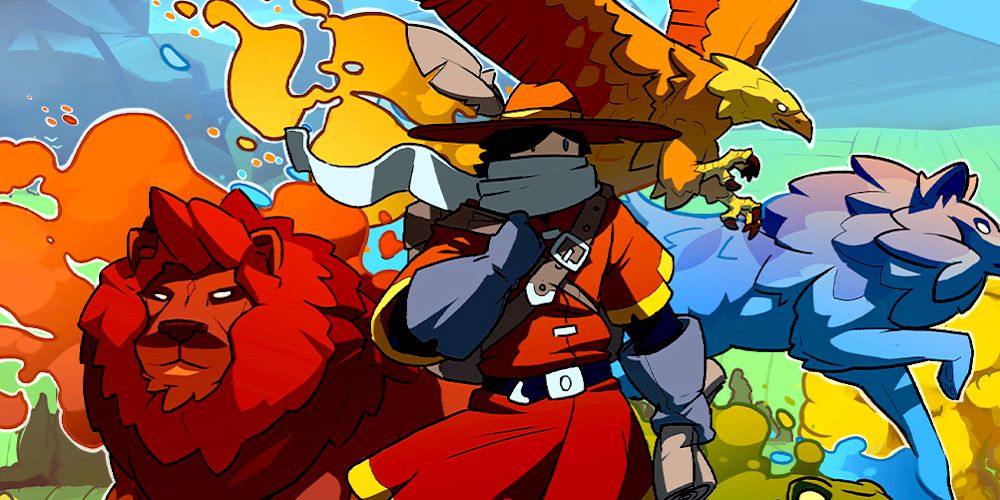Every so often, an indie game comes out with a premise that sounds so cool that you wonder how it's never been done before. And only a fraction of those indie games actually deliver a solid enough experience that lives up to how cool they sound on paper.
Monster Sanctuary deserves a spot among them. While I was apprehensive at first because this game sounded way too good to be true—you learn to be skeptical when you've been burned too many times by games that fell short of their potential—Monster Sanctuary impressed me in several ways.
But perhaps it bit off more than it could chew. Monster Sanctuary shot itself in the foot by being too ambitious, resulting in a convoluted mess of gameplay mechanics that detracts from the overall experience.
Does the good outweigh the bad? Here's my review of Monster Sanctuary; I'll leave it up to you to decide whether this game is right for you.
The Premise
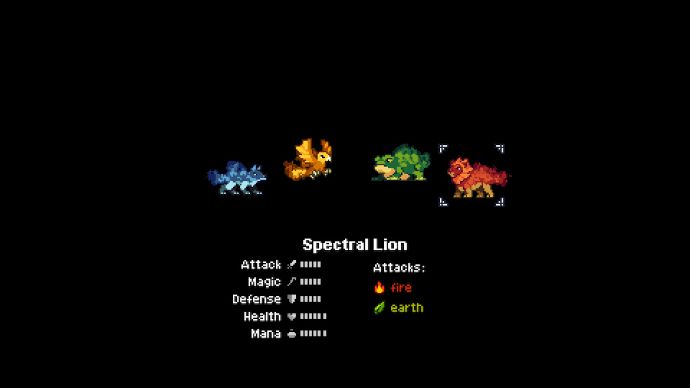
Right off the bat, you can tell that Monster Sanctuary borrows many pages from the Pokemon playbook:
You begin by selecting a starter monster. You wander the world and capture different types of elemental creatures to add to your roster. When you encounter wild monsters in battle, you can choose 3 from your roster of 6 to duke it out.
Your monsters gain experience, level up, and learn new abilities. For anyone who's played Pokemon before, this should all sound eerily familiar.
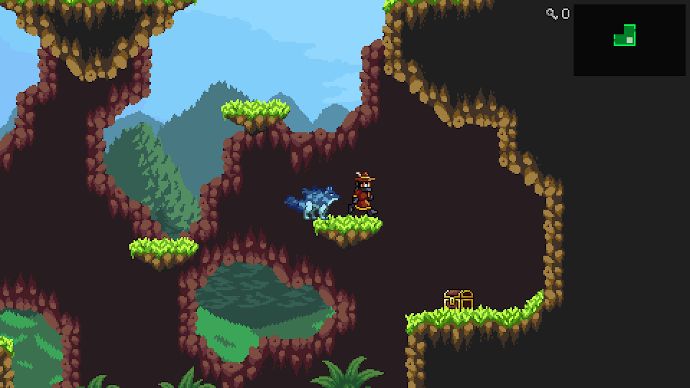
The big twist is that Monster Sanctuary is played in the style of a metroidvania platformer:
You run around in a sidescrolling world that's connected screen by screen, with dimensionality that goes vertical as well as horizontal.
There are environmental obstacles that you can overcome using the special abilities of your rostered monsters (e.g. clawing through vines using your Spectral Lion).
Monsters are visible and only start a battle if you touch them.
All in all, Monster Sanctuary has an excellent overall concept and succeeds in adapting the ideas of Pokemon to the metroidvania platformer format. And there's a lot to like about this game.
The Good
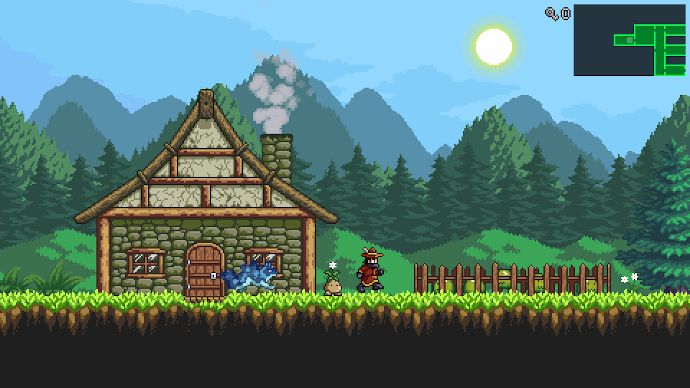
For starters, the aesthetic style and art quality in Monster Sanctuary are downright beautiful.
Monster Sanctuary has 101 different monsters, with each one as creatively designed as the next. I'm in love with the in-battle ability animations, which are flashy and smooth and fun to use.
You'll explore a dozen different environments with unique sprites and doodads and color palettes. Not to mention the surprising amount of detail put into every single image, even the overworld backgrounds. You can tell that Monster Sanctuary's art team poured their heart and soul into this.
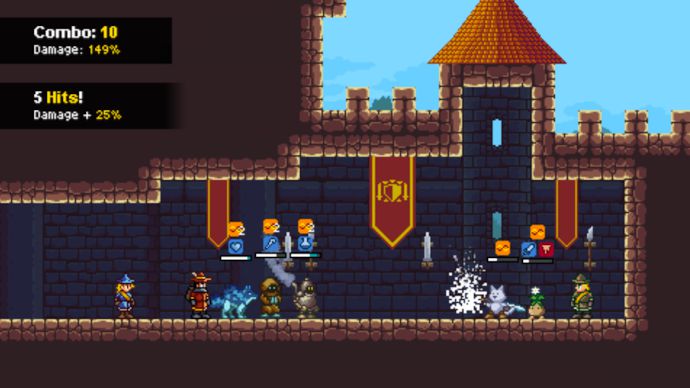
The combo system is one of my favorite features of this game because of how it affects decision making during combat.
Instead of singular hits, every ability in Monster Sanctuary is split into multiple hits. For example, the basic Claws ability delivers 2 hits of 100% physical power while the basic Heal ability delivers 4 hits of 60 + 20% magical power, and buff abilities affect your whole team with each monster counting as 1 hit.
Where do combos come in? At the start of every turn, your damage scale starts at 100%—and every single "hit" increases your damage scale by 5%.
So if you start your turn by casting the Might buff on your whole team (3 hits), your damage scale becomes 115%. If your second monster's action is to Heal (4 hits), your damage scale becomes 135%. And if your third monster attacks, their damage output is 135% what it would normally be.
You can see how this would impact the order of tactical decisions during combat. It adds a layer of thinking that prevents combat from being mindless button mashing, but it isn't so complicated or important that it causes analysis paralysis.
It's a really smart system!
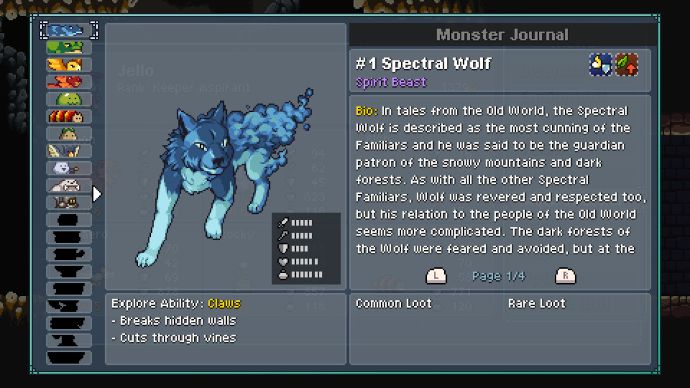
The elemental system also shapes combat is a smart way: there are 4 main elements (plus a neutral element), and every monster has an elemental resistance and elemental weakness.
When you encounter a battle, every monster's weakness and resistance is clearly displayed, which encourages you to choose the best-suited monsters from your team for combat.
And since every encounter involves a set of three enemies, you're encouraged to use different monster setups instead of spamming your "best" ones.
Of course, each monster has multiple abilities of different elements so you have some versatility in how you deploy your team for combat.
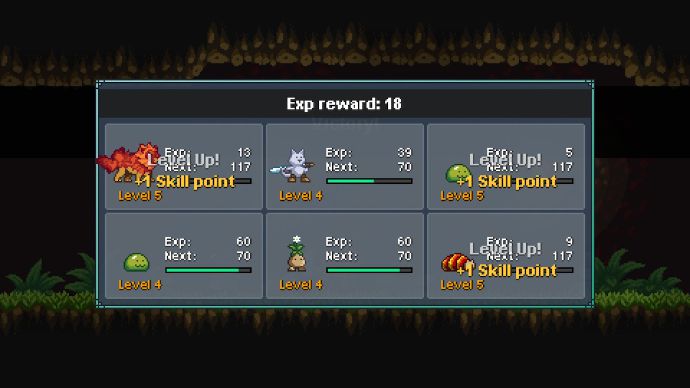
Speaking of combat, I really appreciate that experience gained from battle gets shared with all of the monsters on your team—even if they weren't one of the three monsters chosen for combat.
One of my biggest gripes with Pokemon is that experience was only shared by those who participated.
It's just more convenient for experience to share all the time so you don't have to micromanage your team as much, and it prevents certain monsters from falling behind because they couldn't participate during a long stretch.
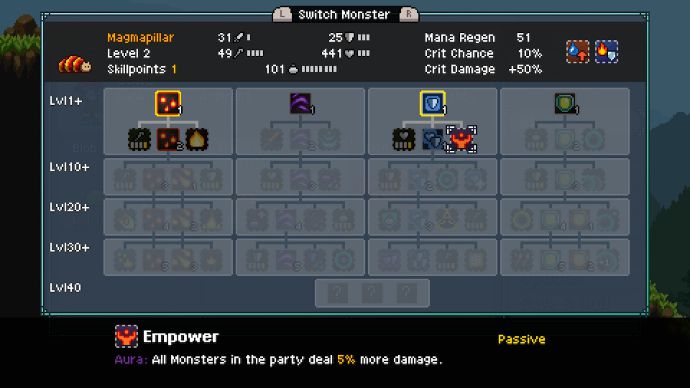
There's a wide range of monster customizations—equippable weapons and accessories, consumable foods, and progressable skill trees—that allow you to strengthen and bolster each monster how you want.
Monster Sanctuary may have gone a little too far in the various ways you can customize your team (more on that in "The Bad" below), but the ideas are definitely interesting and engaging:
Each monster can have a Weapon and three Accessories. You can also feed monsters food that grant permanent bonuses, but only up to three bonuses at any time—if you keep feeding, new bonuses replace the oldest bonuses.
And every time a monster levels up, they gain a skill point that can be spent to unlock new abilities and bonuses in their skill tree.
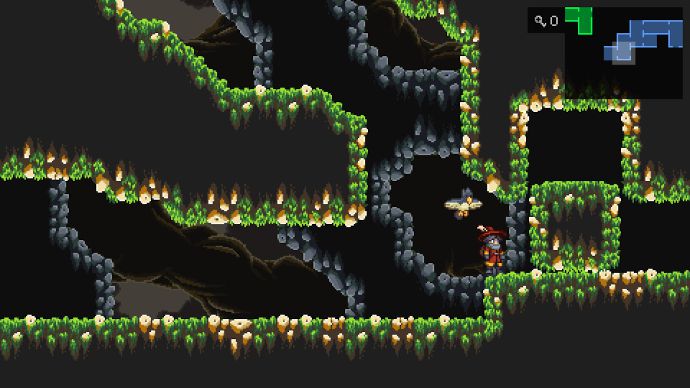
Every monster has an overworld ability that can help you navigate terrain or interact with the environment in various ways. The player character can also discover unique overworld abilities, such as double jumping.
This ties in well with Monster Sanctuary's metroidvania roots in two ways: first, these overworld abilities lend well to engaging environmental puzzles (reminscent of Golden Sun's classic overworld puzzles), and second, certain areas early in the game are inaccessible until you discover the necessary overworld abilities in later areas.
Combined with the teleport crystals (i.e. waypoints) scattered throughout each area, this encourages you to return to areas and explore the world multiple times in a playthrough.
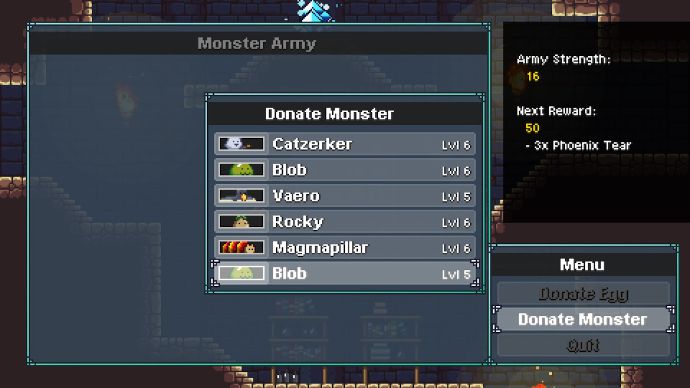
What happens when you have too many monsters or monster eggs and want to get rid of them? You can donate them to your stronghold's monster army!
The monster army is basically a storage system with rewards: every donation increases the strength of your monster army, and you receive rewards when your monster army strength reaches different thresholds.
So not only does it act as a disposal method for unwanted monsters, it actually encourages you to continue collecting monsters.
The Bad
Most of my Monster Sanctuary gripes boil down to one fundamental issue: yes, the game has a lot of good and interesting gameplay mechanics, but arguably too many disjointed ideas that end up overcomplicating things.
In isolation, I really like all of the different systems and mechanics in Monster Sanctuary, and I think they're all pretty clever and engaging. But taken as a whole, it's a mess.
It's clear that Monster Sanctuary aimed for a game of deep complexity, but the end result feels more like a hodgepodge of random pages taken from a game developer's scratchpad.
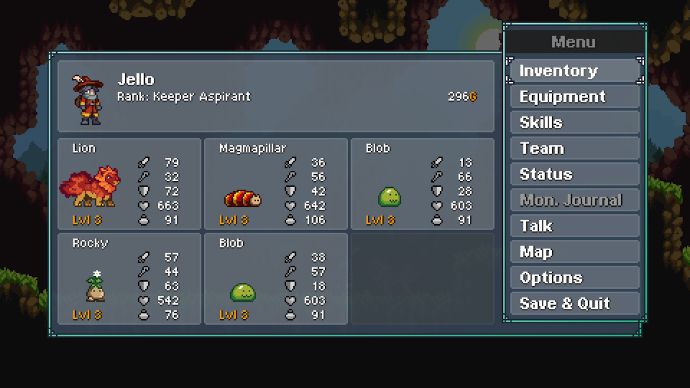
There are way too many monster customizations. Variety is good, but too much variety is overwhelming and empty variety is meaningless.
Let's list all the different ways you can customize a monster:
- 1 Weapon item
- 3 Accessory items
- 3 Food bonuses
- 60+ Skill Tree options
- Shift to Light or Dark variants
- Evolve to an alternate form
All of this would be fine if you were a single character. But for a team of six monsters? And a monster army in the background? To say it's overwhelming would be an understatement.
I'd already felt like it was staggeringly weighty during the introductory quest, and it only got more complicated as the story progressed.
But the real pity of a design with so many choices is that each choice's impact has to be small in order to preserve balance. Every new item you equip, every new food you consume, every new ability you unlock provides an insignificant boost.
The sum total of all customizations may be strong, but the incremental changes along the way feel inconsequential.
In other words, progress in Monster Sanctuary isn't satisfying. Advancements are so miniscule and occur so frequently that you rarely feel like you're actually growing. No epic "hell yeah!" moments. And those are pretty key for the RPG experience.
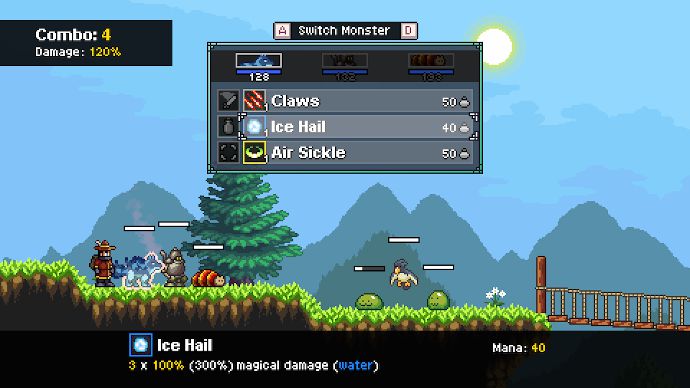
Another bit of extraneous complexity: I don't see what value is added by having a mana system.
Every monster ability costs mana to cast, and every monster regenerates a bit of mana at the start of their turn.
Sure, higher-level abilities cost more mana to cast... but in my experience, battles don't really last long enough for mana to make a big difference. It's just an added complication.
As far as I can tell, it just exists as a way to add more complexity to monster customizations—with "mana" and "mana regeneration" as stats, there's more variety in the bonuses that weapons, accessories, and foods can provide. But, again, it's empty variety.
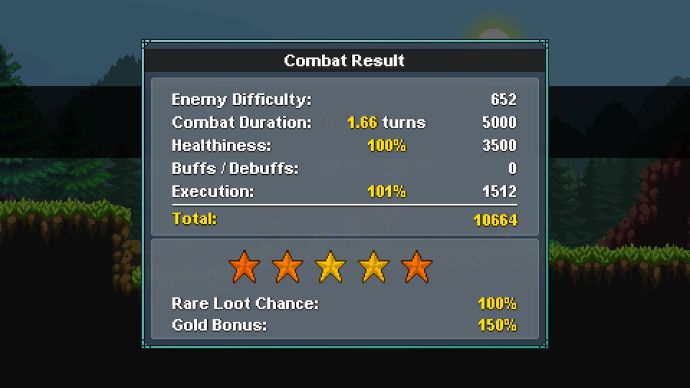
The battle rating feature is another one that's pretty cool on paper, but unnecessary in the grand scheme.
Battle rating is a post-battle calculation of your efficiency in defeating enemies: how long the battle lasted, how much damage you took, how difficult the enemies were, how well you exploited the combo system, etc.
Your actual battle rating is graded from 1 star to 5 stars. The more stars you earn, the more gold you earn as a reward and the higher your chance of receiving a "rare loot" item.
I can see what this system was trying to do. It encourages you to fight strategically and rewards you for understanding the game.
My issue with it is that the calculation is needlessly elaborate and in-your-face for a feature that barely impacts much of anything. Like most features in Monster Sanctuary, it appears to exist solely for powergamers.
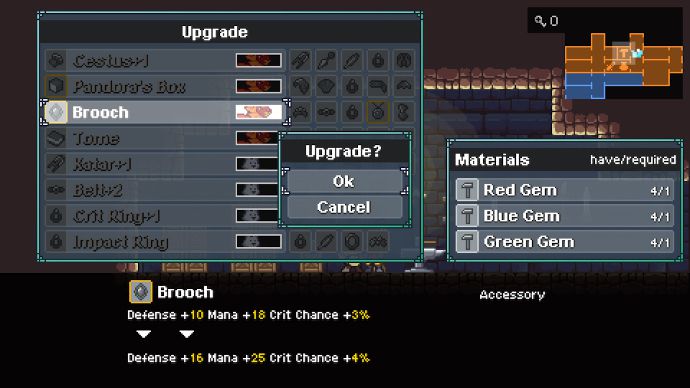
And one more gratuitous feature to toss on the pile: upgrade system.
As if the game weren't convoluted enough, the existence of crafting materials and equipment upgrades adds bloat without adding much depth.
It feels like an afterthought, incorporated as a way to pad out game content and artificially increase playtime—which would be fine if the crafting system was better developed and more fundamentally integrated into the game as a whole.
As is, you could remove it altogether and it would change very little, if anything.
The Verdict
Monster Sanctuary is a needlessly convoluted game, but it's still fun. The combat is engaging, satisfying, and well-designed, which is excellent because you'll spend most of your playtime in combat. And at the end of the day, a game like this is all about the battles anyway.
It's clearly meant to appeal to powergamers. I haven't identified as a powergamer in many years, so perhaps it's no surprise that I can't handle the elaborate number of systems thrown at me.
If you like min-maxing and optimizing a vast array of choices, you'll love Monster Sanctuary.
I'd say it's worth retail price, and absolutely worth getting if you can spot it on sale. There's plenty of content to keep you entertained for hours.
Monster Sanctuary
Monster SanctuaryThe Good
- Beautiful art style and aesthetics
- Over 101 monsters to capture, each with its own skill tree and abilities
- Engaging combat system with well-designed gameplay twists that feel unique
- Tons of strategic choices that will appeal to min-maxers and optimizers
The Bad
- Complex gameplay mechanics and systems can be overwhelming for non-powergamers
- Too many decisions that are minor and incremental, leading to slow growth and moments that feel inconsequential
